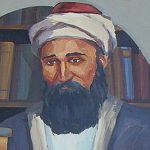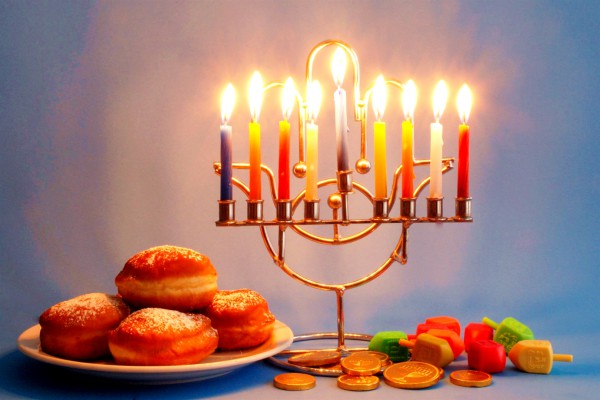
Click here to download PDF
Where do we go from here?
After the uplifting days of Shavuos, which commemorate the greatest event in history of unmitigated Divine revelation, one has to wonder where do we go from here? How can there be any moving forward or growth after having the greatest experience possible? Ironically, upon the place where this supreme revelation occurred, there is no trace of that Holiness there. If we would know where Har Sinai really is, there would be no prohibition to ascend the mountain and tread there despite the fact that there was never ever an experience of Divine revelation parallel to what transpired there anywhere else. By contrast, the Temple mount where although the Divine presence was revealed there but nothing comparable to the unmitigated revelation at Sinai, we are prohibited from going there in our impure state, even at the time when the Beis Hamikdash is no standing there. How do we understand this?
Naso & Post – Shavuos
In most years we read Parshas Naso immediately following Shavuos. As we explained last week, as it is an ancient custom to read Parshas Bamidbar before Shavuos, by the same token, it is of equal antiquity to read Naso directly following Shavuos. What is the connection between Parshas Naso and post-Shavuos?
Why here?
Parshas Naso has a strange combination of topics, it opens up with resuming and finalizing the count of the Leviim and towards the end of the Parsha, it flashes back to events that happened a month before with “Chanukas HaMishkan”– the inauguration of the Mishkan. Why was the story of the inauguration of the Mishkan put in this week’s Parsha? Why was it not put either at the end of sefer Shemos or Parshas Tzav & Shemini which talk about the Mishkan being erected and the Kehuna being passed to Aharon. Why was it delayed and saved for this Parsha that we read following Shavuos?
Sandwiched between the count of the Leviim and the “Chanukas HaMishkan” are the banishment of the impure from wherever they are restricted to be, laws of gifts that are awarded to the Kohen, Sota, Nazir and Birkas Kohanim. What is the connection between these topics and what do they have to do with the count of the Leviim and the “Chanukas HaMishkan”?
“Eirusin” & “Nisuin”
The Pasuk says (Devarim 33:4): “Torah was commanded to us through Moshe as a “Morasha” – inheritance unto the congregation of Yaakov”. Chazal tell us “don’t read it “Morasha” – inheritance but read it as “Me’orasa” – married”, as the giving of the Torah married us to Hashem. There is a very important observation to make. As we know, “Me’orasa” is from the word “Eirusin”, which is when the groom legally acquires the bride, which indeed makes her prohibited onto all other men in the world. However, there’s another step to marriage called “Nisuin”, which is the bride going into the Chuppah and entering the domain of the groom. There are many differences in law between only being an ‘Arusa’ who had “Eirusin” alone and being a ‘Nesua’ who had “Nisuin” also. An ‘arusa’ may be prohibited to all men in the world and carries the death penalty of “Sekila”-stoning if she is unfaithful but on the other hand, she is not yet permitted to her groom and does not have the status of being called “she’eiro hakarov eilav”-his wife who is close to him, for her Kohen husband to be allowed to defile himself by attending her funeral, as well as other halachik differences that all center around one central idea: although she is prohibited to the rest of the world, she has not yet become united and close with her husband until she undergoes ‘Nisuin’ when “he takes her into his domain”, which is performed by the bride entering the chuppah. How do we find “Eirusin” and “Nisuin” in our relationship to Hashem and the Torah?
Where’s the Admission?
The Gemara says (Shabbos 88B-89A) that the plea that the angels put in for the Torah to remain in Heaven and only accessible to them is alluded to in the Pasuk in Tehillim (8:2) “Hashem, our Lord, how mighty is your Name throughout the earth that you should place your Glory on the heavens” . After Moshe bested them in the debate their concession is alluded to in a very similar sounding Pasuk in the same chapter (8:10) “Hashem, our Lord, how might is your name throughout the earth”. How is this Pasuk a concession? It is a repeat of the first half of their plea to leave the Torah in heavens, albeit the request to “put the Glory upon the heavens” is not mentioned, as the Gemara points out, but for it to be a full admission, they should have said “put your Glory upon earth”. How can we be certain that they are conceding to Moshe if they are just saying the same praise that they had said as a preamble to leaving the Torah in heaven?
Sinai vs The Mishkan
The Rishonim comment on the fact that the prohibitions of non-Kohanim and the impure to go into the Mishkan and subsequently the Beis Hamikdash are parallel to the restrictions that there were to ascend Har Sinai at the time that the Torah was being given. The Midrash tells us in Parshas Terumah that Hashem says that once the Torah was given, we acquired Hashem’s Divine presence together with it and that is why following the giving of the Torah, Hashem commands to make the Mishkan. The Divine presence that comes with the Torah needs a home. The idea is that the great revelation at Sinai did not find a home at Sinai. It appeared there and forever transformed us into being Hashem’s chosen nation that serves him which separates us finally and absolutely from the nations of the world. That Revelation did not get “bottled up” and internalized at Sinai. It was internalized and brought into our midst with the Mishkan. In this week’s Parsha, the Pasuk introducing the section of the “Chanukas HaMishkan” (7:1) says: “And it was on the day “kalos”– completed Moshe to erect the Mishkan….” Rashi brings the Chazal that says that it isn’t written in the Torah scroll as “kalos”-completed but rather as “kallas”-bride, that this was like the Jewish people entering the Chuppah. We’re being taught a great lesson here. The giving of the Torah at Sinai transformed us in a manner that we are separate from all the nations of the world like a ‘Arusa’ – a woman who has only undergone “Eirusin”, is separated from all the other men in the world. However, the internalization of that Holiness, the closeness and intimacy with the Divine presence, is the function of the Mishkan, which is like the chuppah, which brings about the stage of ‘“Nisuin”’ and that is internalization, closeness, and unification, with the Divine presence in our midst.
Har Sinai vs Har HaMoriah
With this we can understand why after the great revelation at Sinai ceased, we were permitted to go up the mountain because as great as that supreme revelation was, Sinai was not a vessel to capture and internalize it. Although that revelation changed us and separated us from the nations of the world as a people that belong to Hashem alone, there wasn’t the vessels to contain that revelation. We were like an ‘Arusa’ to Hashem and his Torah but not a ‘Nesua’. The function of the Mishkan of ‘Veshachanti Besocham’ is where there are vessels and a space to contain that revelation. And that’s why that space is treated with similar restrictions to Har Sinai at the time that the Torah was being given. The Mishkan and its vessels are inherently receptors for the Divine light. However, the ground that it stands on a temporary basis is only holy when the Mishkan stands there. When the Mishkan leaves, that ground no longer has holiness attached to it. However, the Temple mount that was consecrated to be the permanent home of the Beis HaMikdash retains that holiness. Ever since the Beis HaMikdash was first built there and never loses that holiness even at the time when the Beis HaMikdash is not standing because it was designated to be the place of the “Beis Olamim”-the Eternal Temple.
Divine Revelation & Angelic Admission
Hashem, His Torah, and Divine Presence, are everywhere and all is sustained by Him. When we talk about “the Divine Presence being somewhere” that is not to the exclusion of everywhere else but rather we mean to say that that place is not just sustained by the Divine presence as everything is, but rather that place has a special quality to internalize the Divine Presence that sustains it and that’s why “the Divine presence is revealed there” (See more on this important fundamental idea in the Ramchal’s Daas Tevunos siman 160; pages 175-177 in the Freidlander edition). The Divine Presence and the Torah are called “Hashem’s Name”. What the angels were saying in their initial claim was “Hashem, “your Name” i.e. your Divine Presence and the power of your Torah permeates all as it sustains all, even the Earth, but reveal Your Glory in heaven” and what they meant by “give your Torah to us” is that the Torah should only be internalized and revealed in the heavens. When Moshe proved to them that the greatest glory would be for the Torah to come down to earth to vanquish evil and to elevate the physical, they may have repeated the words of first half of their claim but this time they mean it differently and they mean to say in a most literal sense, “Hashem our Lord, How mighty is your Name on Earth” that Earth itself will be the vessel that internalizes and hence reveals the light of Torah that in essence is everywhere.
Two Armies
The Zohar (Bamidbar; Vilna edition section 3 page 117B) says that Hashem is now coming to count the “soldiers of the Torah” and the “soldiers of the Mishkan”. That is the secret behind why the Leviim are counted separately from the Jewish people. The whole Jewish people are the “soldiers of the Torah”, as the Torah separated all of us from all the nations of the world. However, as a result of the sin of the golden calf, all Jews share being separated from all other nations but not all Jews share the same level of internalization of the Divine light. Shevet Levi in general and the Kohanim in particular, who were the first to rise up after the sin of the golden calf, merited to be consecrated to be the ones to do the Divine service in the Mishkan and the Beis HaMikdash where the light is internalized. They are “soldiers of the Mishkan”. Although the word “Naso” literally means to “take count”, however it can also allude to “Nisuin”-the level of internalization and unification and that’s why the Parsha that we read after the giving of the Torah which was the “Eirusin” starts off with finishing the count of the “soldiers of the Mishkan”, which is the Chuppah.
“Chinuch”
This is the secret that the “Chanukas HaNesiin” was delayed and put in this week’s Parsha, even though the Torah had touched upon these dates and events in the books of Shemos and Vayikra. What is “chinuch”? It means to inaugurate. It also means ‘to educate’. What is the common denominator? Rav Klonimus Kalman of Piacezna in his monumental introduction to his seminal work, the “Chovos HaTalmidim” references Rashi in Parshas Lech Lecha, on the Pasuk (9:14) “Avraham alerted ‘chanichav’ – those he educated…” Rashi there explains the verb ‘chinuch’ as follows: “it is the beginning of a person or a vessel to enter its trade that it is destined for and similarly, chanoch l’naar, chanukas Hamizbeach and chanukas HaBayis.” The Piacezna Rebbe explains that “chinuch” is not just to impart information like ‘limmud’. It is to connect a vessel or a person with his destiny. In other words, to internalize the light and the mission. Just like inauguration puts the Divine energy within the building or the vessels. So also “chinuch” is to teach the Torah in a way that the student absorbs and internalizes it and that is why as the Pasuk continues, even when he grows old, he will not stray from it because if he was “chanoch” – in his way, he absorbed it and made it a part of himself and that’s why he will never stray from the Torah. We read this after we mark the giving of the Torah because this is how we move forward and progress from Sinai. We are engaged in the generation spanning effort to internalize the infinite light of the Torah.
Forever Since….
With this we understand why we make Birkas Hatorah in present tense, ‘Blessed are you, Hashem, “Nosen” – the giver (present tense) of the Torah’. From Hashem’s perspective, Hashem transferred title of the Torah to us at Sinai all those years ago. As a function of that, He revealed to Moshe everything even what any student is destined to ask of his Rebbe. However, as Torah is infinite, our internalizing of it is a generation spanning project and from our perspective, it’s like Torah is perpetually being given and that’s why it can be truly seen as “new every day” because we are perpetually internalizing it every new day and every new generation internalizes another aspect of the infinite light that had not yet been internalized yet within the Jewish nation.
Kohen Nazir & Sotah
With this we can understand how the other topics sandwiched between the count of the Leviim and the Chanukas HaMishkan are inter-connected and belong in this week’s Parsha. Firstly, the Divine Presence became internalized and revealed in our midst and that’s why the impure one had to be relocated. As we mentioned, the Divine presence and the Torah are called “Hashem’s Name”. “Hashem’s Name” rests upon the Kohanim and that’s why the Torah awarded them with certain privileges which are called in this week’s Parsha, that which belongs to Hashem and yet it’s awarded to the Kohanim (5:8, Rashi there) because of Hashem’s Name dwells upon them. The blessings that the Kohaim put on us is summed up as ‘And they will place My Name upon the Jewish people and I will bless them’ (6:27). The Kohanim have Hashem’s name upon them and they place Hashem’s name upon us. In the effort to verify the innocence of the Sotah, in order to permit her to be with her husband, which is in effect to restore their “Nisuin”, we dig up earth from the earth of the Mishkan and we erase the Divine Name in the waters which means that saving the Jewish marriage is worth the Divine Name and this shows that the Divine Name dwells amongst the Jewish people and particularly in the happy home as Chazal say, ‘if they merit, the Shechina dwells between them’ (Sotah 17A). With this we can also have a positive association as to why the Nazir is mentioned in this parsha. The Nazir can draw upon himself and internalize holiness to the point that he is like a Kohen that must not come in contact with the dead and his hair truly becomes holy. All these topics are functions of the internalization of the light of Torah which is what we must do moving forward from Matan Torah.











